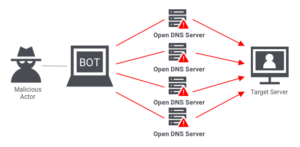In today’s digital age, consequently, cybercrime has become a significant threat, not just to individuals but also to global corporations, banks, and governments. Gone are the days when lone hackers posed the primary risk;” now, highly organized crime rings, operating like tech startups, are constantly innovating new methods of attack. With so much data at risk, cybersecurity has become an essential shield in our digital lives.
In this blog, we’ll explore the basics of cybersecurity, why it’s crucial, and how it’s implemented to protect us from the growing number of cyber threats.
Why Do We Need Cybersecurity?
The internet has become an integral part of our lives; however, it also offers numerous access points for hackers. The sheer volume of data and the increasing sophistication of cyber attacks make it a golden age for black hat hackers. They exploit vulnerabilities and create malicious software that can bypass even the most advanced virus scans and firewalls. This is why robust cybersecurity measures are necessary to protect our data from falling into the wrong hands.
Common Types of Cyber Attacks
Cyber attacks are evolving rapidly, and hackers are getting more creative. Few types of cyber attacks that have plagued us since the internet’s inception are:

- Malware: Software designed to disrupt, damage, or gain unauthorized access to a system.
- Phishing: Fraudulent attempts to obtain sensitive information by disguising as a trustworthy entity.
- Denial of Service (DoS): An attack aimed at making a system or network resource unavailable to its intended users.

What is Cybersecurity?

Cybersecurity encompasses a set of practices designed to protect networks, devices, and data from unauthorized access, damage, or theft. It is an essential component of any organization’s security strategy and includes both cybersecurity and physical security measures.
At its core, cybersecurity aims to protect against three primary threats:
- Unauthorized Access
- Deletion (Unauthorized)
- Unauthorized Modification
These threats are addressed by the CIA Triad—Confidentiality, Integrity, and Availability.
The CIA Triad
The CIA Triad is a fundamental model in cybersecurity, guiding organizations in developing their security policies:
- Confidentiality: Ensures that sensitive information is accessible only to those authorized to view it.
- Integrity: Protects data from unauthorized modification, ensuring it remains accurate and trustworthy.
- Availability: Guarantees that information and resources are accessible to authorized users when needed.
How is Cybersecurity Implemented?
Implementing cybersecurity involves several key steps:
- Identification: Recognizing the type of cyber attack, whether it’s a DoS attack, a phishing attempt, or another threat.
- Analysis: Assess the damage, isolate compromised data, and evaluate the scope of the problem.
- Response: Develop and deploy a patch or solution to mitigate the issue and restore normal operations.
These steps are crucial in maintaining the integrity, confidentiality, and availability of an organization’s data and systems.
Further Readings
IT Job Hunt: A Beginner’s Guide for Freshers
The AI-Software Synergy: Innovating Industries for Tomorrow
